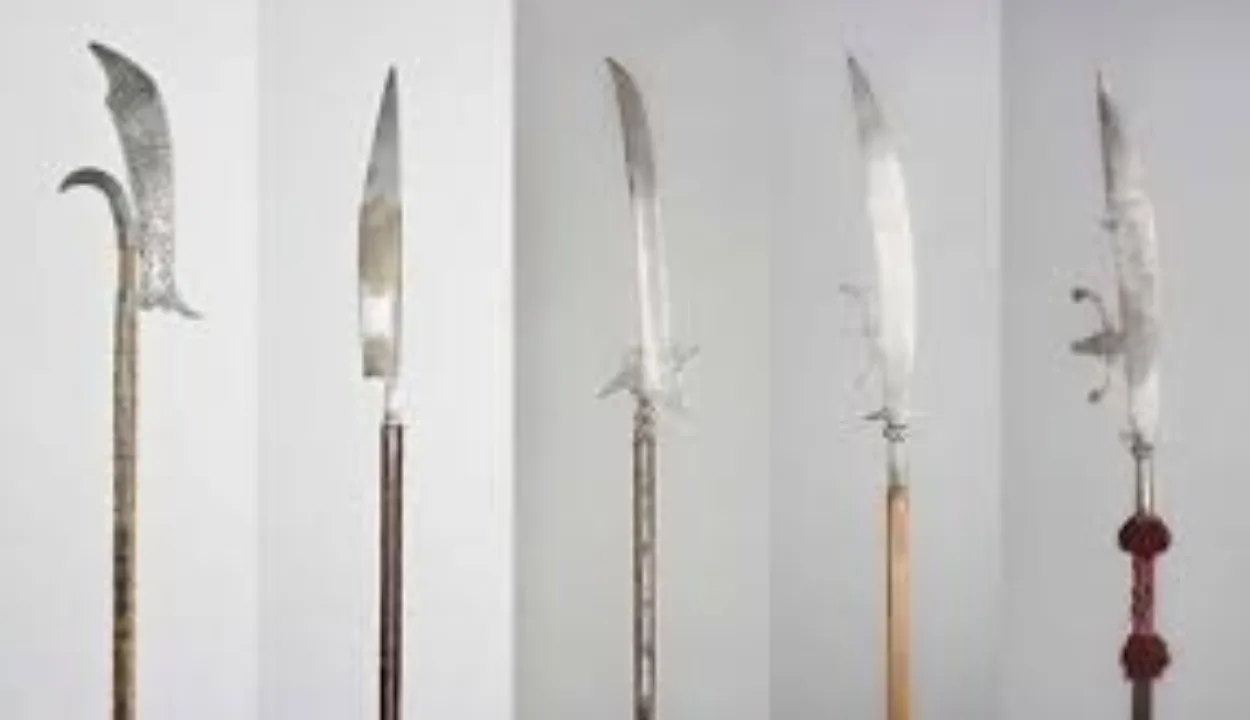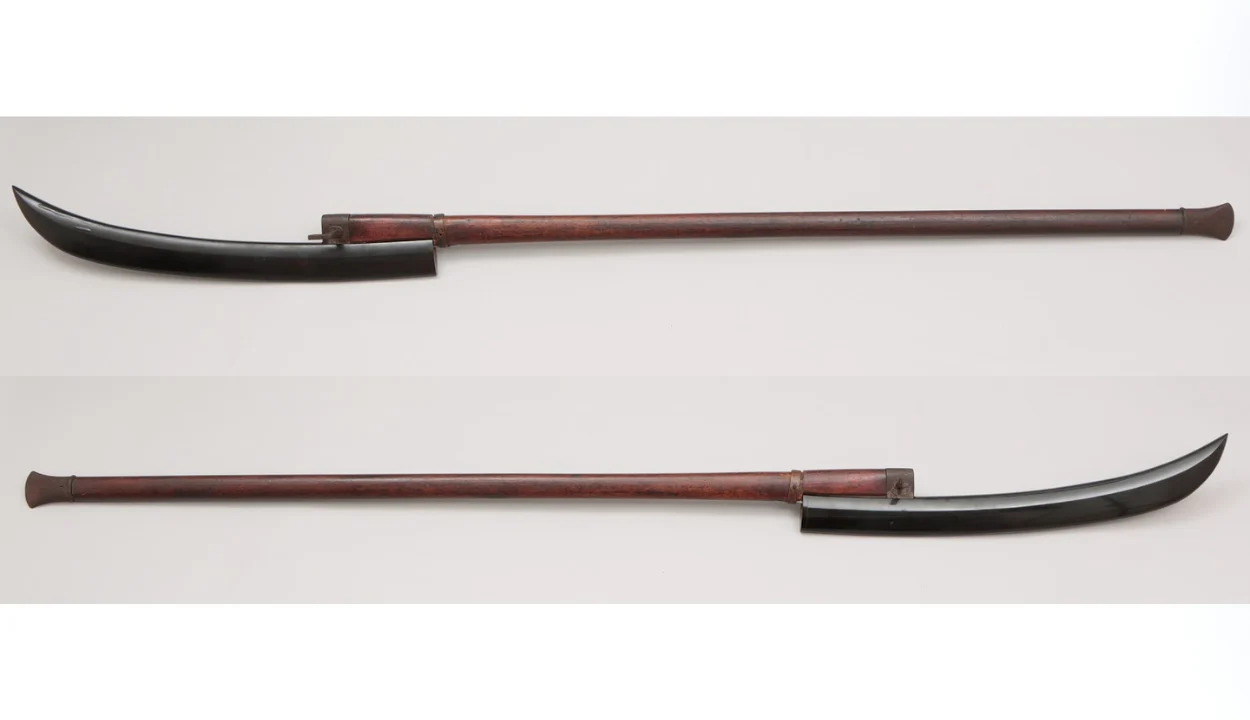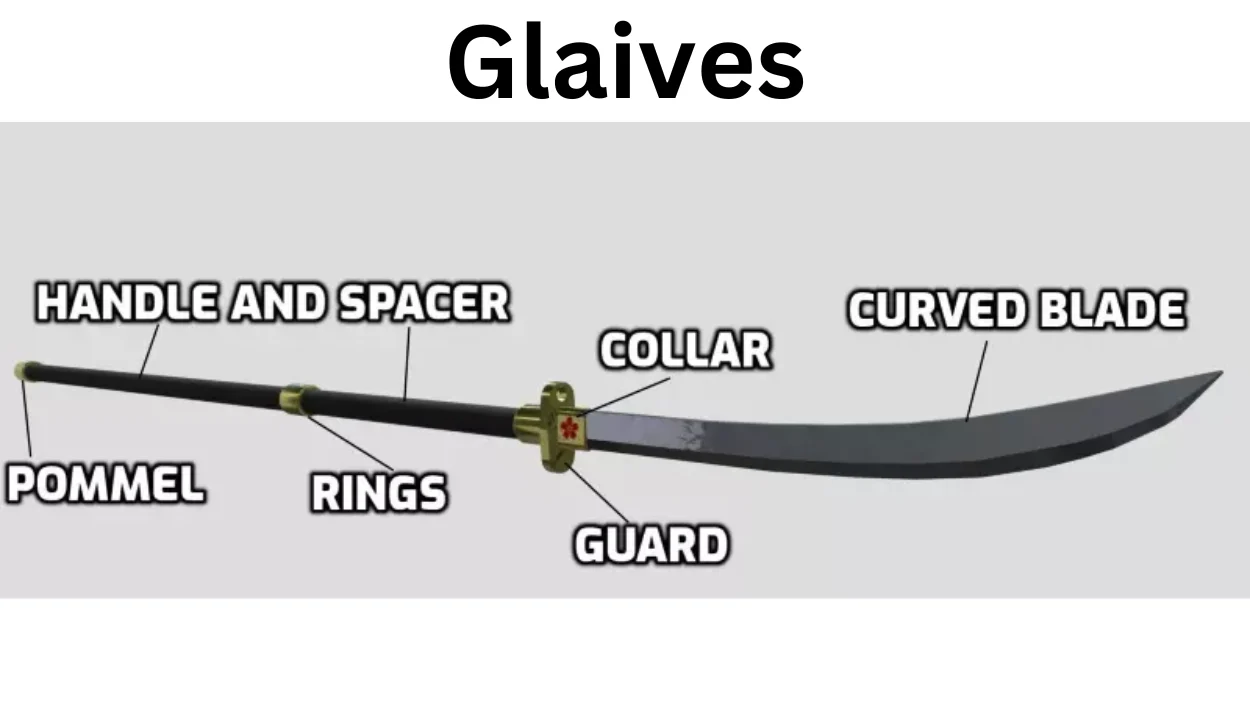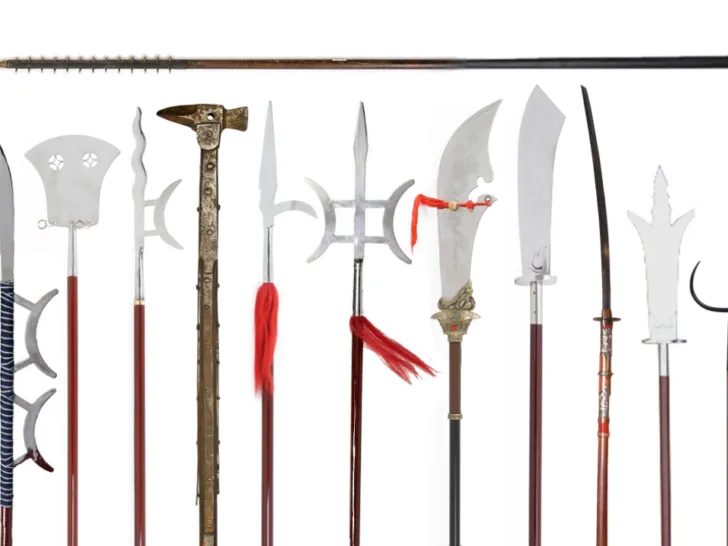If you’re looking for information on the differences between glaives and naginata, then you’ve come to the right place.
Glaives and naginata are both extremely powerful weapons that have been used by warriors throughout history. Both weapons consist of sharp blades mounted on a wooden stick. Glaive is believed to be originated in Europe while Naginatas have their roots planted in Japan. While both of these weapons have a lot of similarities, there are also some key differences between them that make them unique. In this blog post, we’ll be exploring these differences in greater detail.
We’ll discuss how glaives and naginata are traditionally made and used, as well as their advantages and disadvantages in battle. We’ll also look at how new advances in technology have made them even more effective weapons. Finally, we’ll explore how modern martial artists incorporate these weapons into their training regimen. So, let’s get to know some details:
What Are Glaive Polearms?
Glaive polearm is a common term for a polearm weapon, with a curved and razor-sharp blade on the outside curve mounted onto a long shaft. The glaive was developed in the early Middle Ages, mainly for use in battle by infantry troops.
Appearance
A glaive is usually made with a single-edged blade on the convex side which was sharpened meanwhile the back side is blunt. The length of the blade is usually 18 inches mounted on a shaft of length 2 meters.
Usage
The design of the glaive allowed its wielder to use it like both a slashing and thrusting weapon—while gaining extra range because of its long shaft—making it an effective defensive or offensive tool when used properly. Its versatility also enabled its wielder to attack multiple targets quickly and efficiently, even in close-quarters combat.
Moreover, the end of the handle of these weapons often featured some kind of handguard or crossguard which protected its user from counterattacks from another weapon. The length of these weapons also allowed their users to keep their enemies at bay by controlling their movement and attacking them from a safe distance. For further info check this video out:
What Are Naginatas?
Naginatas are a type of polearm that originated in feudal Japan. It is believed to be derived from the Chinese guan dao, a heavy-bladed weapon. Naginatas were used by samurai on the battlefield, as well as by ashigaru (foot soldiers) and Buddhist monks. It consists of a curved blade attached to a long wooden pole (Budhundle). This combination made it possible for infantry to gain an advantage against cavalry by keeping their distance while attacking.
Appearance
In terms of appearance, Naginatas are similar to Glaives in that they consist of an axe blade attached to a long pole. Naginata blades have curved edges and come to a point. This feature makes them excellent for slashing and thrusting attacks, making them both useful for offense and defense. Naginata blades range from 11-24 inches. These blades are mounted on an oval shaft of length ranging from 47-95 inches.
Usage
Naginatas are still used today in Japan for martial arts practice and reenactments of historic battles. Many schools across Japan now teach the use of naginata in traditional Japanese martial arts such as Kenjutsu and Kobudo.
Comparing Glaives & Naginatas: Are They Really Different?
When comparing glaives and naginata, it’s easy to see that there are some distinct differences in design and construction. Since their place of origin is different their method of wielding, and material used in making and assembling also differs completely.

Material
The steel used in glaives was bloomery steel while Naginatas were forged with tamahagane steel.
Weight and Balance
Glaives are typically heavier and more balanced than naginata, making them suitable for cutting, hacking, thrusting, and slicing. Naginatas are usually lighter and the curve of the blade gives it more agility in combat.
Historical Use
The historical use of glaives and naginata also had an effect on their respective designs. Glaives were often used by light infantry as they could provide greater reach on the battlefield than swords or spears. On the other hand, naginata were used by samurai warriors due to their extra range when fighting mounted opponents.
These nuances help to explain why glaives and naginatas can be so different even while sharing some similar attributes. By understanding these distinctions, you can actually gain an appreciation for both weapons and their place in history.
| Glaives | Naginata | |
| Blade | Single-edged curved | Single edged curved |
| Handle | Approx 80 inches | Ranging from 47-95 inches |
| Origin | Europe (Medieval Period) | Japan (Feudal Period) |
| Primary Use | Battle (Cutting and Thrusting) | Combat and Ceremonial |
| Modern Use | Ceremonial and Sport | Ceremonial and Martial Arts |
| Safety | Dangerous, requires training and safety equipment | Dangerous, requires training and safety equipment |
How Are Naginatas Used iIn Battle?
Naginatas have played an important role in Japanese warfare for centuries, from the 12th century through to the second World War. The naginata served as both a weapon and a symbol of feminine power.
Longer Reach

Compared to glaives, naginatas are much longer and have a much greater reach. This long reach is one of their primary tactical advantages – as well as being able to fight other foot soldiers up close, they could also be used to attack mounted enemies at a distance.
Versatility
In addition to their formidable length, naginatas are also incredibly versatile weapons. Unlike glaives, they have not only a bladed edge but also a pointed end that can be used for thrusting and poking; this makes them effective in various different scenarios and combat situations.
Finally, the naginata was also one of the few weapons which could be used effectively against armored opponents – making them even more valuable on the battlefield.
How Are Glaives Used In A Battle
The Glaive polearm is a unique weapon that has a curved blade at the end of a long pole. It has become synonymous with European medieval history and has been featured in numerous video games and movies.

Distinctive Features
Design-wise, Glaives have several distinct features, beginning with a curved blade measuring anywhere from 30-75cm in length. The blade is often made of a single piece of metal and is typically characterized by its single-edged cutting edge, giving it an ‘S’ shape. Additionally, the pole or shaft of the Glaive can vary in length from 1 to 4 meters but mostly it is 2 meters.
Agility
The design of a Glaive is such that it can be used for both slashing and thrusting attacks, making it an incredibly versatile weapon. This is why despite the introduction of firearms and the decline of traditional infantry practices, Glaives were still seen as valuable weapons for hundreds of years before finally being phased out in favor of more modern weaponry.
Is It Easier To Use A Glaive Or A Naginata?
Deciding which is easier to use depends on your own skills, as they both require considerable training and practice. The naginata was traditionally considered to be a more graceful weapon due to its curved blade, while the glaive was considered more powerful and effective in close combat due to its long reach.
Some of the differences between these two polearm weapons include:
- Length: A glaive usually has a long shaft, typically longer than the naginata’s. The handle of a glaive can also be longer than that of a naginata.
- Weight: A glaive is typically heavier than a naginata due to its larger size and curved blade.
- Reach: The reach of the glaive is longer than that of the naginata because its blade is much longer. But those naginatas with longer blades and shafts definitely provide more range.
- Balance: The balance of the two weapons differ greatly; while the naginata has its center at the blade tip, the glaive’s center point lies closer towards the handle. This makes it more agile and easier to maneuver.
Ultimately, each weapon requires dedicated practice and skill before mastery can be achieved; however, because of its smaller size and weight, a naginata may be easier for some individuals to use effectively than a glaive.
FAQs
What is a Glaive?
A glaive is a polearm weapon that consists of a single-edged blade on the end of a long pole.
What is a Naginata?
A naginata is also a polearm weapon that consists of a curved blade mounted on wooden or steel pole.
What is the main differences between a Glaive and a Naginata?
The main difference between the two weapons is the area of origin. Glaive has been used in Europe while naginatas developed in Japan.
What are the origins of each weapon?
The glaive originated in Europe and was used primarily during the medieval period. The naginata originated in Japan and was used by samurai warriors during the feudal period.
What were the primary uses of each weapon?
The glaive was primarily used in battle as a versatile weapon that could be used for both cutting and thrusting. The naginata was used by samurai warriors for both combat and ceremonial purposes.
Conclusion
- In conclusion, the glaive and the naginata are both weapons with a long and distinguished history that have been used by many cultures.
- Although both weapons feature a single-edged blade on the end of a pole, the glaive is specifically meant for slashing while naginata is designed for thrusting.
- Ultimately, glaives and naginata are both excellent weapons for personal defense that offer different advantages depending on the user’s skill level and preference, making them both essential to the armory of a serious martial artist.

